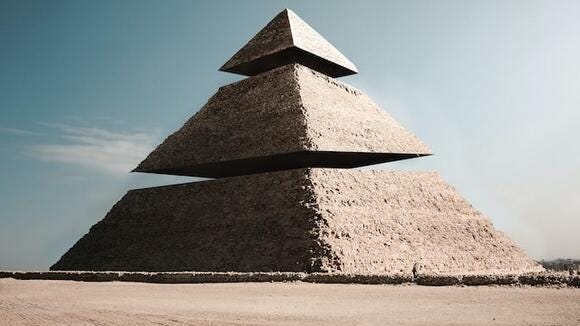The Transition from Pyramids to Underground Tombs in Ancient Egypt
Written on
Chapter 1: The Era of Pyramid Construction
Egyptian pharaohs are renowned for their magnificent pyramids, which served as powerful symbols of their wealth, authority, and religious convictions. These impressive structures were erected from the reign of King Djoser to that of King Ahmose I. However, with the onset of the New Kingdom, there was a notable shift; pharaohs transitioned from pyramid building to interment in the Valley of the Kings, located near modern-day Luxor.
This change in burial practices has prompted various theories, with security issues emerging as a prominent explanation. Pyramids were frequently targets for looters, leading to the decision to conceal royal burials within the remote and rocky valley, which was better protected by numerous necropolis guardians.
Section 1.1: Religious Evolution and Tomb Design
Another potential factor contributing to the decline of pyramid construction is the evolving religious beliefs that favored underground tombs. During the New Kingdom, a new spiritual concept emerged, focusing on the king's nocturnal journey through the Netherworld. This belief necessitated intricate designs for tombs carved directly into the rock beneath the earth's surface, which the Valley of the Kings' underground tombs effectively accommodated.
Subsection 1.1.1: The Impact of Luxor's Geography

The geographical attributes of Luxor, which became Egypt's capital during the New Kingdom, also played a crucial role in this shift. The area was not only small but also posed architectural challenges that made the construction of new pyramids impractical.
Section 1.2: Continuation of Pyramid Building in Nubia
Despite the cessation of pyramid construction among pharaohs, affluent private citizens maintained the tradition. During the first millennium BC, the Nubian region, which includes parts of southern Egypt and Sudan, saw a resurgence in pyramid building. Nubians constructed pyramids for both royalty and private individuals, with this practice continuing until roughly 1,700 years ago.
Chapter 2: Concluding Thoughts
In summary, while the precise reasons behind the pharaohs' abandonment of pyramid construction remain somewhat unclear, it is generally accepted that security concerns, shifts in religious beliefs, and the geographical limitations of Luxor were significant factors. Nevertheless, the monumental pyramids built by the ancient Egyptians continue to stand as iconic representations of their wealth, power, and religious devotion.
The first video, "Why did the Egyptians stop building pyramids?" delves into the various factors that led to the decline of pyramid construction among the pharaohs, providing insights into security, religion, and geography.
The second video, "Why Pharaohs Switched from Pyramids to Underground Tombs," explores the reasons behind the transition from grand pyramid structures to underground burial practices, emphasizing religious shifts and practical considerations.